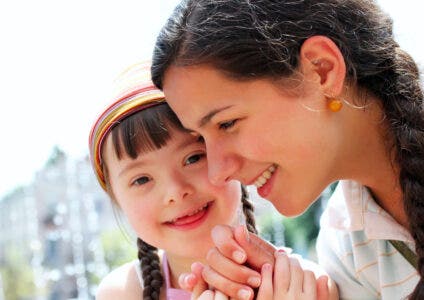Will Your Next Party Be Inclusive for Children with Disabilities?
Think back on the last time you felt excluded from something; we’ve all experienced that feeling of exclusion before, right? Do you remember how it felt? That empty feeling you get when you’ve been passed over, forgotten, or outright ignored? Children with disabilities experience that more often than their peers without disabilities do ... A lot more often.
Most of you reading this are party rental professionals, party planners, or event organizers. With the exception of our friends operating family entertainment centers, most of us work from one space to the next. We use bounce houses and party tents. And our company, Tent and Table, sells products to facilitate all of that. So why are we writing some big lengthy piece on the inclusion of children with disabilities, some of whom can’t fully enjoy a number of our products?
Here’s the short answer: it’s the right thing to do.
No child should ever feel excluded from fun, especially not during birthday parties or other events. And there are steps we can take to help them have a great time. So why not take those steps? Why not do our best to apply the core philosophies of ADA compliance to our operations and, more importantly, our values?
There’s a great deal we can do to help children with disabilities have fun at social gatherings. And the first thing we need to do is take some time to understand and appreciate what children with disabilities have to endure.
The All-Important ADA
One in four adult Americans live with a disability, and the United Nations identifies people with disabilities as the world’s largest minority. But people with disabilities are often overlooked by society as a whole. They’re generally not as popularly advocated for as other minority groups. And children with disabilities are the most vulnerable amongst them, too.
The Americans with Disabilities Act of 1990, commonly referred to simply as the ADA, is a landmark civil rights law benefiting people with disabilities. The ADA vastly improved accessibility all throughout the United States and safeguards people with disabilities from discrimination. Its protections are similar to the Civil Rights Act of 1964, and it has been wildly successful.
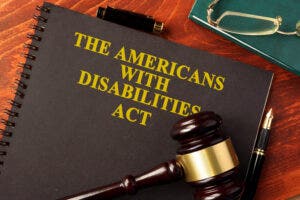 The ADA made tremendous strides toward equality for people with disabilities. It prohibits discrimination on the basis of disability in a number of ways. Coupled with the Rehabilitation Act of 1973, it promotes employment opportunities and fair employment practices for people with disabilities. And it establishes enhanced accessibility and access equality as well.
The ADA made tremendous strides toward equality for people with disabilities. It prohibits discrimination on the basis of disability in a number of ways. Coupled with the Rehabilitation Act of 1973, it promotes employment opportunities and fair employment practices for people with disabilities. And it establishes enhanced accessibility and access equality as well.
Thanks to the passage of the ADA, accessible parking can be found at almost every establishment in the United States. Whole buildings are designed with the fundamentals of ADA compliance steeping their blueprints. Closed captioning, ADA compliant websites, inclusive classrooms, and public events with sign language interpretation, mobility assistance, and technical assistance … the ADA made all of that possible.
Only a handful of laws passed in this country’s history have truly impacted the nation on that large a scale. And for people with disabilities, the Americans with Disabilities Act was a major milestone on the road toward equality and inclusion.
Our First Step: Understanding Disability and Inclusion
All of that having been said, no law will ever eradicate that sense of exclusion we mentioned earlier. For people living with disabilities, that exclusion is rather easy to come across. It’s something adults sometimes struggle to cope with … and that coping is obviously more difficult for children with disabilities.
 Exclusion can be discriminatory, intentionally or otherwise. It can be hurtful or mean, even when it comes at the hands of someone who thinks they’re doing the right thing. Or it might just come in the form of perpetual exclusion, where children with disabilities are given the wrong sorts of attention (or worse, no attention at all) and left feeling unwelcome or unwanted.
Exclusion can be discriminatory, intentionally or otherwise. It can be hurtful or mean, even when it comes at the hands of someone who thinks they’re doing the right thing. Or it might just come in the form of perpetual exclusion, where children with disabilities are given the wrong sorts of attention (or worse, no attention at all) and left feeling unwelcome or unwanted.
Acts of inclusion go a long way toward helping children with disabilities feel encouraged to open up and have fun. But all too often, that inclusion is coupled, perhaps accidentally, with a sense that reasonable accommodation is something extra. That they’re different from other kids, and additional steps had to be taken to make them feel comfortable. So it’s important to understand that if your act of inclusion draws unnecessary attention to someone’s disability, it’s not actually inclusive at all.
Take some time to learn about the different types of disability. Understand the differences between temporary or short term disabilities and permanent disability.
If you know someone living with a disability, as most Americans do, give them a call. Ask them about inclusion and what aspects of their life still bring up feelings of exclusion. You might be surprised by the answers they give you.
Applying ADA Compliance to Your Next Party or Event
If you own a family entertainment center (FEC) or some other type of publicly accessible business, chances are you’re already familiar with ADA compliance. But some businesses and organizations, like churches, for instance, aren’t beholden to ADA compliance. And neither are temporary structures or mobile attractions, like commercial inflatables or party tents.
Much of ADA compliance focuses on accessibility. People with disabilities being able to enter and exit a permanent structure easily, and accessing what’s inside that building without obstruction. Title II of the ADA and Title III both focus on public accommodation for state and local government buildings, private businesses, nonprofits, and more. Here’s a Department of Justice link explaining in more detail.
In overly-simplified layman’s terms, ADA compliance requires pathways to be free of barriers that limit, restrict, or prohibit mobility. And those accessibility standards can and should be applied to our work in the party rental industry, too.
When you’re setting up a party tent or commercial inflatables, be sure you aren’t obstructing pathways with any part of the structure. Guy lines for your party tent should be staked outside of those pathways. Blowers and power lines for blowers need to be kept out of paths, too.
Inside your party tents and throughout the event location as a whole, space your folding tables and chairs out for adequate movement space. Maintain a minimum of 32” (aim for 36” or more) between potential barriers and obstructions. If you can help it, provide at least 80” of headroom wherever applicable.
Pathways should be as level, wide, and smooth as possible. Avoid tall grass or thick carpeting. Try to make sure ramps are included wherever and whenever possible to grant access around the grounds, too.
How to Develop Inclusion for Children with Disabilities
There are a wide variety of disabilities and impairments. We won’t be able to cover all of them within the scope of this single article. Researching different types of disabilities and impairments can help prepare you for making inclusive accommodations for children with disabilities.
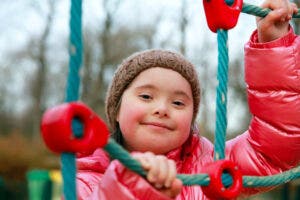 If you encounter a type of disability not discussed in this piece, ask yourself this question. Would my accommodations live up to ADA compliance standards if our company were beholden to them? Would someone living with this particular disability feel welcomed and encouraged to participate in the event?
If you encounter a type of disability not discussed in this piece, ask yourself this question. Would my accommodations live up to ADA compliance standards if our company were beholden to them? Would someone living with this particular disability feel welcomed and encouraged to participate in the event?
Better still, if you know a particular person with a disability and would like to accommodate them, ask them directly how to best accomplish that. They’ll know better than anyone else what needs they’ll have and what they’d like to do at the event.
With as broad a brush as possible, we’re going to briefly discuss various forms of disabilities. We’ll present a few ideas on how you can accommodate people with each one. And we’ll present some general tips and other advice for inclusivity, too.
Visual Impairments
Various degrees of vision loss in one or both eyes, color blindness, light or color sensitivity, and other disabilities and impairments involving a person’s vision.
- Utilize Braille wherever and whenever possible. Try to add signs featuring Braille throughout your event, and if possible, develop your event literature in Braille as well.
- Prepare event staff so they help guide the child to and from attractions, as needed
- Use audio queues for additional guidance
- Avoid blasting music through loudspeakers all over the event. People with visual impairments utilize hearing in ways others do not, so it’s important they be able to hear things more easily than others.
- Avoid direct, bright, glaring lights when possible
Auditory (Hearing) Disabilities and Impairments
Deafness or being hard of hearing.
- Event staff SHOULD NOT speak loudly or yell to be heard. Speak clearly and at a normal volume unless that individual instructs otherwise. Be sure to also face the person and avoid obstructing your mouth as the individual may be able to read lips.
- Set up easily legible signs around events to help children navigate the grounds and attractions
- Use thematic and dramatic lighting. You can set moods, tones, and atmospheres using clever lighting arrangements. This helps provide more inclusion for people with auditory disabilities and impairments. And it makes the event more fun and aesthetically stunning for people without disabilities, too!
- Use flashing lights to indicate emergencies and use those lights to mark evacuation routes
- Hire a sign language interpreter familiar with ASL (American Sign Language) or PSE (Pidgin Signed English). Both of these languages are common and popular in the United States.
- Always keep a pen and paper nearby, especially if a sign language interpreter isn’t available.
Cognitive, Neurological, and Intellectual Disabilities and Impairments
Can include autism spectrum disorder, Asperger's syndrome, learning disabilities (ADHD, dyslexia, dysgraphia, dyscalculia, etc.), epilepsy, or disabilities or impairments resulting from an Acquired Brain Injury (ABI) or other trauma.
- Use signage to present information clearly and descriptively
- Create calm zones strategically scattered around the event with minimal noise and lights. Make these areas as comfortable and relaxing as possible
- Provide safety instructions, rules for games or attractions, and other information in brief, easily-understood text accompanied by verbal instructions.
- Avoid bright strobing/flashing lights unless they’re used in emergencies, and avoid including too many strobes in said emergencies.
- Read the section below on physical disabilities and look for ways to improve mobility throughout the event.
- Inform guests with autism of what might happen before it happens. Surprises and shocks should be avoided wherever possible. Include “spoilers” for attractions that involve scary or surprising elements and make them optional for guests so as to not ruin the surprise for others
Mental health Illnesses and Conditions
Describes a large swath of illnesses and conditions such as depression, anxiety, bipolar disorder, obsessive compulsive disorder (OCD), schizophrenia, and various personality disorders. Medications for mental health issues often come with side effects like difficulty focusing or concentrating, memory issues, impaired vision, or physical shaking or tremors.
- Place clearly visible warnings on stressful or scary attractions. For instance, post a visible, legible notice outside of a haunted house warning what is inside
- Likewise, create visible notices for any attractions or games requiring concentration, computational skills, steady hands, or focused vision in order to have fun or play competitively
- Create calm zones. See the section above on cognitive, neurological, and intellectual disabilities for more information
- Like with auditory impairments, keep pens and papers ready in case someone is having trouble communicating verbally.
- For bounce houses and other attractions with larger numbers of users, reduce and limit the number of active participants at one time to minimize stress due to overcrowding
Physical Disabilities and Impairments
Paralysis, loss of limbs or extremities (from birth or through amputation), repetitive stress injuries, arthritis, and other impairments resulting in a loss of mobility, stamina, agility, or dexterity.
- Event staff should never attempt to help someone with a physical disability without first asking if it’s okay to help, unless asked directly by the individual
- Event staff should also attempt to sit or stand at the same level as that person when communicating with them. Don’t stand closely over them and avoid “hovering” and “towering.”
- Another note for event staff: NEVER attempt to touch, push, pull, or lift a person’s mobility aid or wheelchair unless specifically invited to do so.
- NEVER, EVER assume an event attendee/guest with a physical disability also has a cognitive or intellectual disability.
- Be sure to incorporate mobility as a central philosophy of your event planning and utilize ADA compliance guidelines to ensure enhanced accessibility to attractions and concessions
- Keep wheelchairs, crutches, and canes in storage on the event grounds in case someone needs them
Speech Impairments and Disabilities
Difficulty speaking or being understood, which may include (but is not limited to) muteness, dysarthria, apraxia, lisping, aphasia, speech delay, spasmodic dysphonia, stammering, and stuttering.
- Prepare event staff to be patient and accommodating for speech impairments. They should ask for clarification only as necessary and do their best to comprehend what is being said.
- NEVER attempt to finish someone’s words or sentences for them. Provide ample time for a person to finish what they’re saying, and ask for clarification only if necessary.
- People with speech impairments may not be able to vocalize emergencies or danger the way others might. Event staff should do their best to visually keep track of individuals with speech impairments.
- As we’ve mentioned repeatedly before, keep sets of papers and pens ready and available at various stations throughout the event. This allows people with speech impairments to quickly and easily write down information they may not be able to say.
- Some people with speech impairments speak ASL or PSE sign language, so having at least one sign language interpreter at the event will sometimes prove helpful.
- If games or attractions require verbal participation, adjust the rules of those games to accommodate speech impairments.
General Accommodations and Inclusion
More advice and tips for event planning to accommodate children with disabilities.
- Prepare event staff to be patient and observant, and instruct them to treat everyone at the event how they themselves would want to be treated. People with disabilities don’t want to be treated differently. They’re just like anyone else.
- Service animals are not pets. They play critical roles in the lives of children with disabilities. ADA compliance dictates service animals must, by law, be allowed to accompany people with disabilities in any and all areas they have access to.
- Set up water/hydration stations around the event and be sure water is always available for free to your guests/attendees.
- If you’re certain children with disabilities will be in attendance, try to ask them and/or their parents for advice on how you can ensure inclusion and accessibility for them.
- Be sure to let people know in event marketing materials or invitations that you’re trying to make your event inclusive. Ask guests and attendees if there are any special accommodations they’d like you to make.
- Be sure to include a wide variety of attractions and games to ensure no one feels left out. Some children with disabilities can’t play particular games, compete in an inflatable obstacle course, or utilize an inflatable water slide. Do your best to include alternative games and other attractions to help improve inclusion.
- Try to hire event staff with disabilities. People with disabilities work just as hard as people without disabilities, if not harder. They’re just as capable of completing their work as anyone else. And yet people with disabilities are too often overlooked for employment opportunities, despite being perfectly qualified individuals.
The Business of Inclusion: It’s More than ADA Compliance!
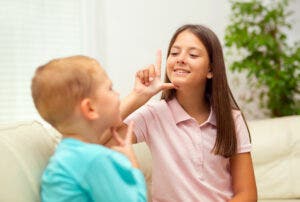 As we’ve already explained, ADA compliance in our industry isn’t really a regulatory issue. Our temporary structures aren’t beholden to the same laws or rules as permanent structures. It’s more about ensuring everyone attending our parties or events can have a safe, fun time and always feel included and welcomed. And children with disabilities deserve that as much as anyone else.
As we’ve already explained, ADA compliance in our industry isn’t really a regulatory issue. Our temporary structures aren’t beholden to the same laws or rules as permanent structures. It’s more about ensuring everyone attending our parties or events can have a safe, fun time and always feel included and welcomed. And children with disabilities deserve that as much as anyone else.
But seeking out ADA compliance regardless of regulatory necessity is a smart business move, too. Accessibility and inclusive practices may require slightly bigger investments, but they also result in more people attending our parties and events. More people utilizing our attractions, games, and concessions. And ultimately, that all means increased profitability as well.
We all got into this business for the same primary reason: facilitating fun for our customers, guests, attendees, families, and friends. The business elements are important too, but they aren’t our primary motivators. The fact that inclusion, ADA compliance, and accessibility at our events can improve long term value and increase profit potential? That’s just a strong bonus.
Ensuring Children with Disabilities Have Fun
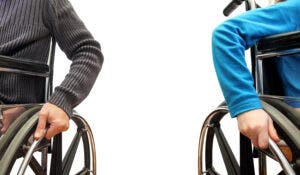
Take the time to learn more about disabilities and impairments. Do your best to ensure your parties and other events live up to ADA compliance standards as best as possible. Those are the very best steps you can take to ensure children with disabilities are having an enjoyable, memorable time at those events. And at the end of the day, that’s our primary objective for all of our customers and guests, right?
Once you really put in that effort, you’ll start to better appreciate how children with disabilities might make use of certain games and what might be fun for them personally. Learning about disabilities can be an eye opening experience, and you’ll quickly come to realize how people with disabilities can enjoy making use of your equipment and other assets in ways that might surprise you.
Committing ourselves to ADA compliance does create more work for us at parties and events. It does mean we’re spending more money, too. Improving accessibility and enhancing inclusion won’t always be as simple or cheap as planning table and chair layouts better.
Ultimately though, ADA compliance is as rewarding a venture as any. It improves your profitability. It can increase event exposure and bolster marketing. And it future-proofs your business for new accessibility laws that could develop down the road.
Best of all, ADA compliance means more people are having fun at your events. And nothing will ever feel as rewarding as seeing children with disabilities and children without disabilities alike racing around your event, loving every single second of it all.



